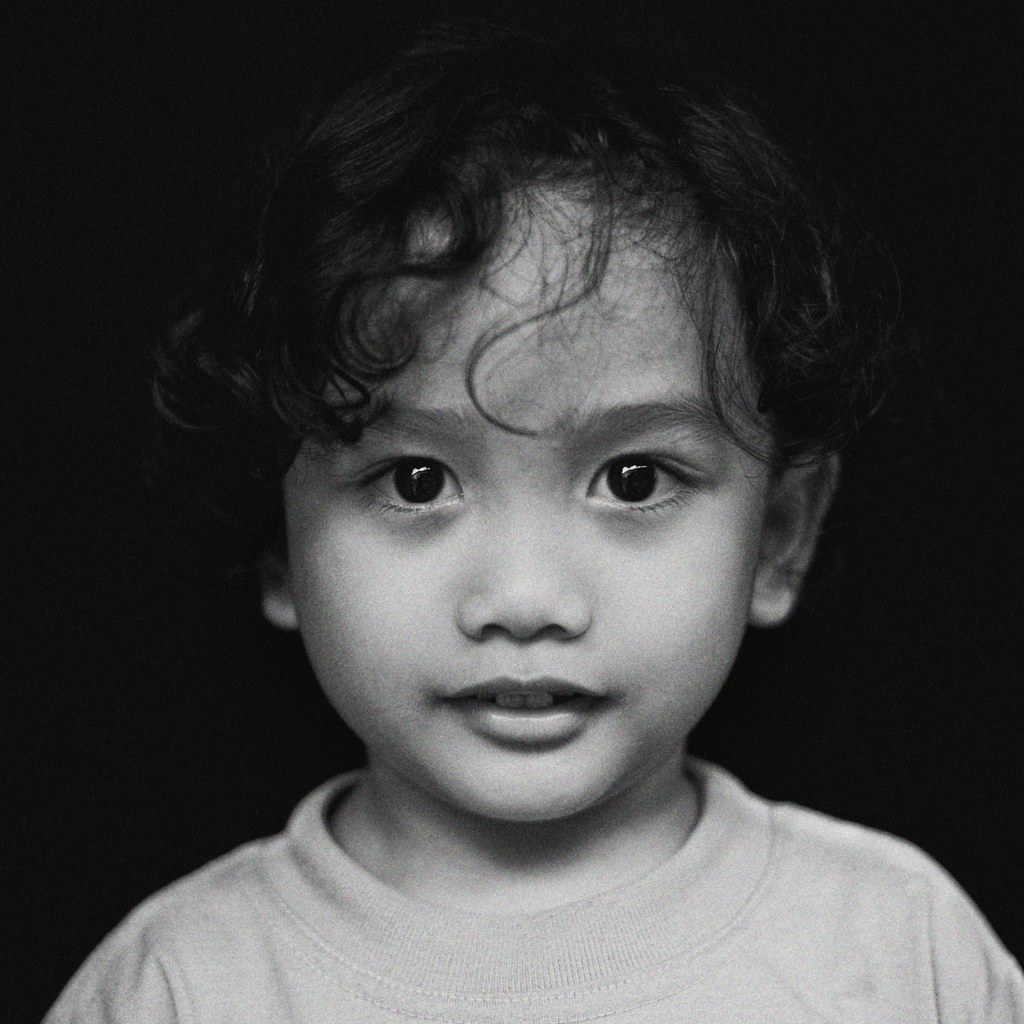Digital Photography | Noise and Grain Factor
© 2011 Wazari Wazir | Portrait of My Son in Black and White | Photograph With Add Grain in Adobe Photoshop
As the name suggest, “Noise” is something undesirable, unwanted thing, nobody wanted to be stranded in the middle of “Noisy” surroundings. People wanted to be in the peaceful environment, less “noise” to be exact but then again what it is all about when it comes to Digital Photography? What is “Noise” and what is “Grain”?
Noise in digital photos consists of any undesirable flecks of random color in a portion of an image that should consist of smooth color. It is somewhat like a black fine sand scattered all over the picture. You can see from my son picture above where the face of my son is not smooth, there is black tiny particle all over the place, that is what we normally called as a “Noise” in Digital Photography. Grain on the other hand refer to the same effect but usually associate with film photography.
We cannot talk about Grain and Noise without talking about ISO, film sensitivity or the digital camera sensitivity towards light. The only difference between Digital Camera Sensor Sensitivity and film camera sensitivity is that we can adjust the sensitivity on DSLR to whatever level of sensitivity as our camera permit but we can’t change the sensitivity of Film Camera Speed or ISO for every single frames like DSLR can do. Once you load a film which have ISO 400 into the camera, you are stuck with that ISO for 36 frames of the exposure, you can’t change the ISO for each and every frames whereas you can change ISO in Digital Camera for every single exposure as you wish, for an example you can shoot at ISO 100 outdoor and when you went inside a building where the light is not so bright, you can easily switch the ISO to 1000 to make it more sensitive to light.
Just like Film, the higher the ISO we choose, which to make the film or the sensor to be more sensitive to light, the “Noise” or “Grain” will be more visible. In Digital camera, when we increase the ISO, the camera will amplify the image signal in the camera, however this also amplifies noise and so higher ISO speeds will produce progressively more noise. While in Film, when we use High ISO or ASA like ISO 1000 an above, the size of the grains of silver halide in the emulsion is bigger, since larger grains give film a greater sensitivity to light. The “grain” of silver halide in film is bigger at High ISO compared to at Low ISO, that’s why we can see those “grains”.
I know this things can be confusing especially to those of you who have never shot a single roll of film before but to make it easy for you, the “Noise” or “Grain” like what you can see from the portrait of my son above will only be visible if we use High ISO whether you are using a Camera Film or DSLR, you will get that look at Higher ISO, usually from ISO 1000 and above but with the advance in digital photography technology, nowadays we can safely shoot at ISO 1000 to 2000 or even at ISO 3200 with less noticeable “Noise or Grain”. If we want to print our picture no larger than 8×10 Inch print, that should be no problem, even though you still can see the “noise” but its is acceptable compared to the grain that will be too apparent if we use film with that Higher ISO.
Personally for me I like the “Film Grain” effect but I will never use Higher ISO just for the sake or getting that effect, unless I’ve to. Most of my “Grainy” picture that you can see on my blog usually comes from editing. The picture above were taken at ISO 400 and the “grain” were add later in Photoshop, the original picture were quite smooth with no noticeable noise. I choose to add the grain to mimic the effect of Film Grain. I like the look of Kodak TRI-X 400 look.
A quick recap, the Higher ISO you use ( ISO 1000 and above ), the more sensitive the sensor towards light and the consequence is visible noise. Sometimes you have no choice but to increase the ISO in order to captured certain event like if you are shooting indoor sport, gymnastic for an example, usually photographers will be prohibited from using flash during any sports event, that’s is not a problem if the sports happen in the outdoor but when it happen indoor like gymnastic where you need to freeze the action without the support of your flash under dimly lit stadium light, you have no choice but to increase the ISO in order to make your sensor more sensitive towards light so that you can use fast shutter speed to freeze the moment.
The problem is, you will get “noise” but in this situation the moment that you want to captured is more important than the “noise” itself. When you manage to captured a great moment, any “technological perfections” will become secondary. That’s what photography is all about, capturing moment at the speed of light ( Sounds good, doesn’t it? ), maybe slower than the speed of light, but you get the point.
Related Post : Photoshop Tips and Tricks – How To Apply Grain in Photoshop


One Comment
hazel
i like this side…awesome..something different…